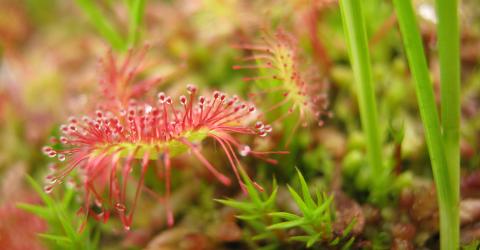
Partnerships with other Conventions
The Convention on Wetlands is one of the oldest multilateral environmental agreements (MEAs). Its mission covers the wise use of wetlands for their ecosystems and also their water resources. The Convention therefore works particularly closely with the six other bioversity-related Conventions, and with those concerned with water governance.
The Convention has devoted a great deal of effort to developing synergies with these other environment-related instruments, and continues to do so.
The Convention contributes to shared goals such as the Aichi Biodiversity Targets and the Sustainable Development Goals by implementing its own Strategic Plan for 2016-2024, and through joint work plans developed with other Conventions. We also collaborate to guidance and campaigns of shared interest.
The biodiversity-related Conventions
The Convention collaborates with the six other Conventions which focus on biodiversity issues through the Biodiversity Liaison Group established in 2002 by the Parties to the Convention on Biological Diversity. The other members are:
• The Convention on Biological Diversity (CBD)
• The Convention on the Conservation of Migratory Species of Wild Animals (CMS)
• The Convention on the International Trade in Endangered Species of Wild Flora and Fauna, (CITES)
• The International Treaty on Plant Genetic Resource for Food and Agriculture (ITPGRFA)
• The International Plant Protection Convention (IPPC)
• The World Heritage Convention (WHC)
The Contracting Parties asked the Secretariat through Resolution XI.6 in 2012 to continue this cooperation and also to work with the Joint Liaison Group of the three Rio Conventions (the CBD, the UN Framework Convention on Climate Change (UNFCCC) and the UN Convention to Combat Desertification (UNCCD). They further instructed the Secretariat in Resolution XII.3 (2015) to strengthen collaboration with UNEP, UNDP, and other international agencies.
The Convention also participates fully in the processes of the Chairs of the Scientific Advisory Bodies of the Biodiversity-related Conventions (CSAB) and in the Intergovernmental Science-Policy Platform on Biodiversity and Ecosystem Services (IPBES), where the Chair of the Convention’s Scientific and Technical Review Panel (STRP) is an observer to the Multidisciplinary Expert Panel.
Among efforts to improve access to the information provided by all the MEAs, the Convention's Resolutions and other key documents are published on the InforMEA portal. As more information becomes searchable by theme on the Convention web site, so it will be accessible to a wider audience through InforMEA.
The water Conventions
The Convention on Wetlands is increasingly engaging with the other two global “water Conventions”. The UN Convention on the Law of the Non-navigational Uses of International Watercourses (the New York Convention), which entered into force in 2014; and the UNECE Convention on the Protection and Use of Transboundary Watercourses and International Lakes (the Helsinki Convention), which entered into force regionally in 1996, and was amended in 2013 to give it a global reach.
The Convention also takes part in UN Water, the United Nations Forum on all freshwater issues.